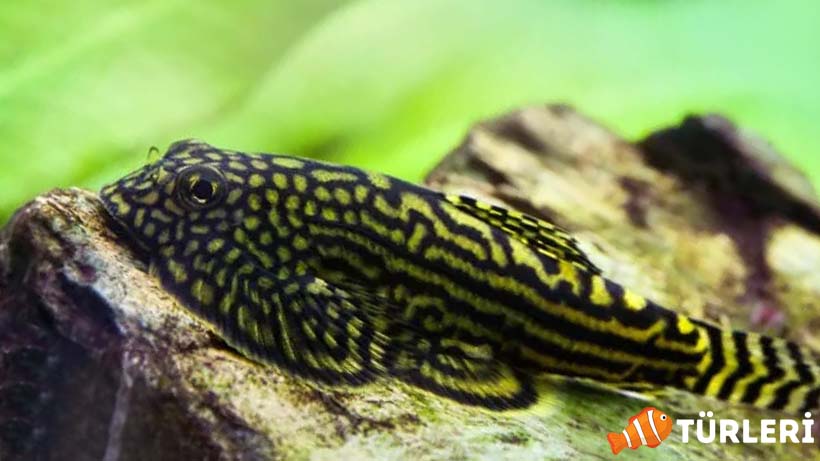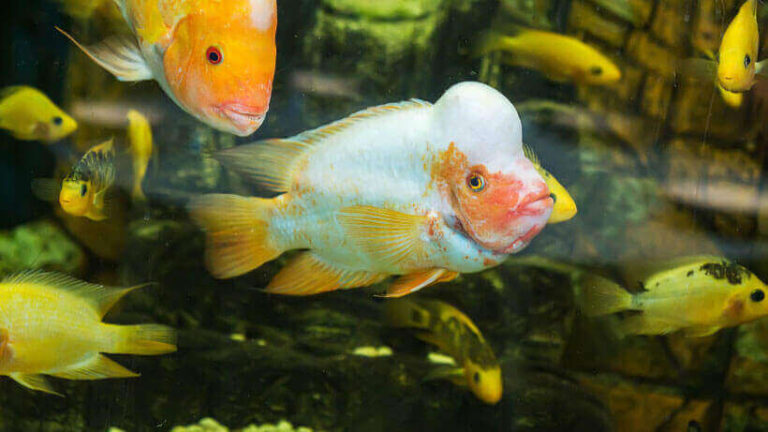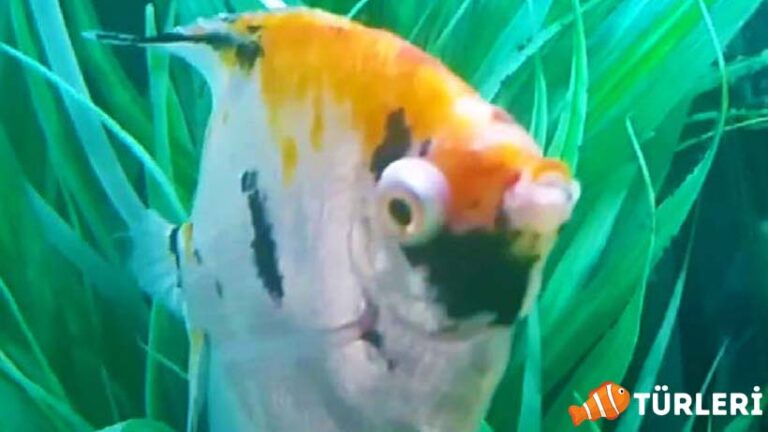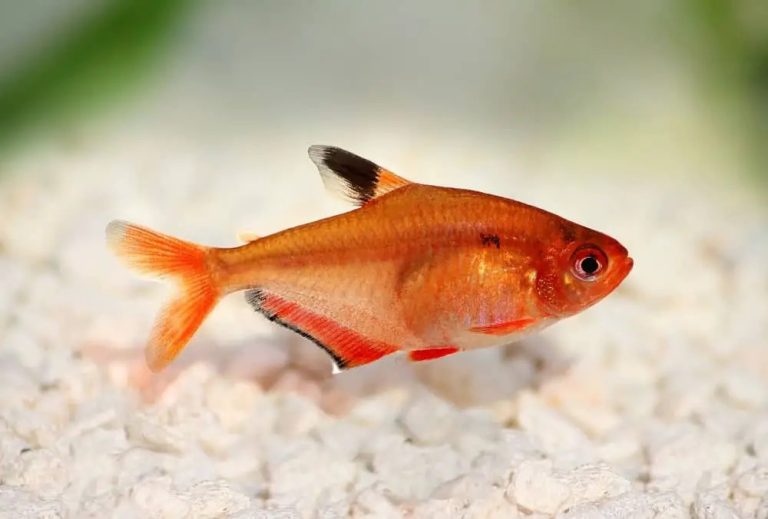Butterfly Loach Guide – All Features
The Butterfly loach, with its beautiful patterns, butterfly-like body, and not-so-difficult care, is a special loach species you will want to nurture and breed.
If you’re looking to add a characteristic touch to your aquarium, you’re about to choose the right fish! Continue reading for its care, breeding, features, size, and much more.
This Butterfly Loach guide will assist you in getting to know it and understanding all its requirements. Don’t be among those who want to get a Butterfly Loach but give up thinking its care is tough! There’s no chance you can’t make it happy as long as you meet specific, straightforward conditions.
Butterfly Loach Fish Species Summary
| Other Names: | Butterfly Hillstream Loach, Chinese Butterfly Loach, Hong-kong Plec |
| Scientific Name: | Beaufortia kweichowensis |
| Origin: | Asia |
| Diet: | Omnivorous |
| Behavior: | Peaceful |
| Behavior Towards Its Own Species: | Aggressive |
| Swimming Area: | Bottom and glass surface |
| Water Temperature: | 18 – 24 °C (64.4 – 75.2 °F) |
| Water Hardness: | 4 – 12 GH |
| pH Level: | 6.5 – 8.0 |
| Minimum Aquarium Capacity: | 120 Liters (approx. 31.7 gallons) |
| Adult Size: | 8 cm (approx. 3.15 inches) |
| Reproduction: | They lay eggs |
| Lifespan: | 6 – 8 years |
| Care Level: | Moderate difficulty |
Features
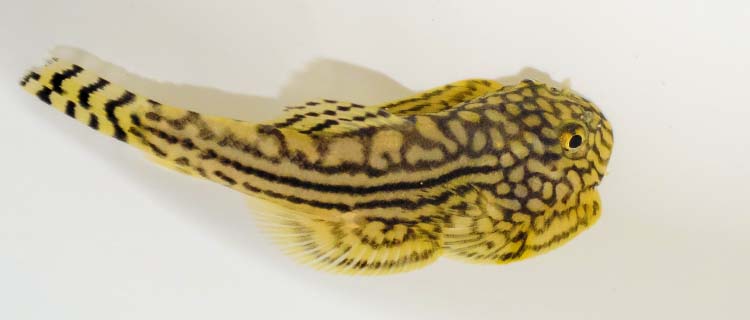
The Butterfly Loach is an aquarium loach species from the Cobitoidea family of the Cypriniformes order. It is divided into 8 different subspecies within its family. The most well-known are Beaufortia sp., Sewellia sp., and Gastromyzon sp.
Upon reaching maturity, this loach species measures about 8 cm in size and typically lives for 6 to 8 years in its natural habitat. Unlike many other freshwater loaches, once this species acclimatizes, it becomes very active.
Distinctive from other loach varieties due to its unique appearance, the primary features of the Butterfly Loach include:
- Around their mouths, they have 3 to 6 pairs of whiskers.
- Their body shape resembles a topido.
- They have smooth, slippery skin.
- Their abdomen and lower region are almost entirely flat.
- There are small spines along the edges of their fins that help resist current.
- They possess wide fins that give them a butterfly-like appearance.
- Their primary color is a yellowish-grey, with vague brown patterns on it.
Natural Habitat
The natural habitat of the Butterfly Loach is the Xi Jiang river located in Southern China. Additionally, it can be found in some rivers in the Guangdong province.

In the habitat of Beaufortia kweichowensis, substrates made up of rocks, sand, gravel, and fragments from other rocks are found. The waters in which they live are clean and rich in oxygen.
Few plants are found in their habitat, and they are not essential. However, you can add plants like Anubias to contribute to the water’s cleanliness. In their clear and clean waters, with the influence of the sun, communities of microorganisms form, which constitute their main diet.
Sexual Dimorphism
Distinguishing between male and female Butterfly Loaches is relatively easy. By looking at several specific points on both the male and female, you can determine their gender.

When viewed from below, the head of the male Butterfly Loach appears more pronounced than the female’s. The head of the female seems to merge with its lateral fins.
Female Butterfly Loaches appear plumper than males. Their sides are slightly larger compared to males.
Males have more vibrant and distinct colors than females.
Care
Their care is slightly more challenging than other species like Dwarf loach and Oto catfish. However, with the right conditions, you can look after these fish without issues.
The value Butterfly Loaches add to your aquarium isn’t just visual. They are also incredible algae eaters.
If you’re dealing with algae issues on glasses and rocks, just a few of these fish can consume the algae in a short time and minimize future growth.
Feeding and Diet
Like many fish, the Butterfly Hillstream Loach is omnivorous. In addition to the food you provide, they will gladly eat the naturally occurring algae.
Their favorite foods include shrimps, flake foods, bloodworms, and brine shrimps. If you have other fish in the tank, it’s worth noting that they might consume the fry.
Apart from commercial and frozen foods, they relish vegetables like spinach, cabbage leaves, cucumber, and zucchini. It’s recommended to feed them adequately twice a day.
Occasionally, you can also feed them with brine shrimp (artemia) which they enjoy.
Aquarium Size and Water Values
Because they evolved in high-flow waters, it’s hypothesized that the body of the Butterfly Loach adapted over time to its environment.
They can thrive in waters with currents that most aquarium fish couldn’t handle. They possess spines, fins, and body shapes that allow them to anchor even in very strong flows. Hence, the current in their tank should be swift.
Aside from standard aquarium setups, provide plenty of hiding spots with rocks to make them feel secure. The closer you can mimic their wild environment, the happier and more comfortable the fish will grow.
As in their natural habitats, you need to ensure a well-oxygenated and clean water environment. Another thing to note is not to keep just one or two of them.
These fish prefer to live in groups. Instead of keeping 1-2, you should ideally have 4-5. Also, an aquarium volume of 120 liters or more would be suitable for 4-5 Butterfly Loaches.
The average required water values are:
- Water temperature: 18-24°C
- pH: 6.5-8.0
- gH: 4-12 (70-210 ppm)
- kH: 10-15

Which Fish Can They Live With?
The aquarium volume mentioned above is largely relevant to this section. If not provided with sufficient space, they may fight among themselves for food. Their aggressive behavior towards their own kind often stems from this.
Butterfly Loaches might consume other species of fish. Especially when they’re hungry, they can eat smaller fish (particularly the young ones). So, if you have another fish species from which you intend to get offspring, you need to be cautious and provide plenty of hiding spots.
Some fish that get along well with Butterfly Loaches are:
- Tetras
- Rasboras
- Guppies
- Mollies
- Danios
- Snails
- Goldfish
It should be noted that guppies and mollies, listed above, are not fond of swift currents. Therefore, if you can keep the water flow at a base level, you should consider housing them with these types of fish.
Additionally, it’s advisable not to keep them with large cichlid fish and fish from their own kind like Vanmanenia, Formosania, Gastromyzon.
Butterfly Loach Breeding (Butterfly Hillstream Loach)
Unfortunately, this loach species cannot be bred in an aquarium setting. Some aquarists have tried and continue to do so, but no one has succeeded yet. The Beaufortia kweichowensis species available in the trade are entirely sourced from their natural habitats.
This species is sold in our country’s aquarium fish stores as Borneo Loach and Borneo Butterfly Loach. Referring to them as “vatos fish” is simply a typographical error.
However, breeding is possible for another butterfly loach species, Sewellia lineolata.
It’s feasible to breed the Sewellia lineolata species in an aquarium. We will outline the necessary steps below.
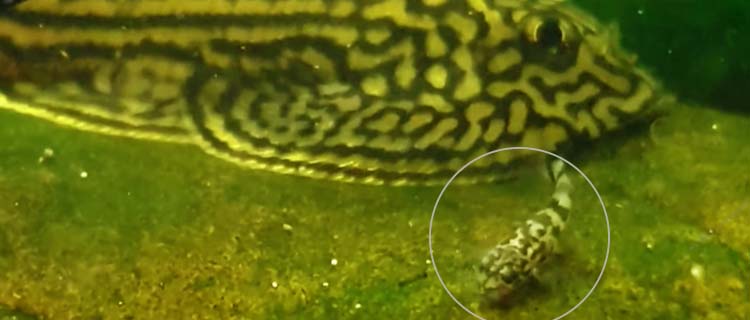
Beaufortia Kweichowensis Breeding
In its natural habitat, the Butterfly Loach needs specific conditions to breed. Like other loach species, this species reproduces by laying eggs. In their habitat, the male fertilizes the eggs, which are then released into the water current.
The eggs, drifting in the water, get lodged between pebbles and, after a few days, the fry emerge. Once free-swimming, the fry measure only about 2 mm when they first hatch.
Sewellia Lineolata Breeding
If you wish to breed this species, water parameters (especially nitrate levels) must be closely monitored. The required water values have been provided above. A ratio of 1 male to 2 or 3 females is appropriate.
Using breeding cubes and plenty of plants is essential for healthy reproduction. Additionally, to encourage mating and reproduction, the water temperature can be raised to 26°C (78.8°F).
A clean water environment is vital for the breeding of the Butterfly Loach, so a good filtration system is necessary. Although it’s not strictly required, it’s recommended to keep the eggs in a separate aquarium.
Doing this means you won’t need to clean the tank’s bottom and won’t risk harming the fry. Also, to prevent the filter from sucking up the fry, you should attach a sponge or similar material to the intake of the filter.
To feed and grow the fry effectively, you should feed them at least twice a day and perform basic cleaning every day to keep water parameters in check.
After a while, the fry, like the adults, will constantly roam the aquarium, consuming the algae. This contributes positively to their development (allowing some algae to grow in the aquarium before the fry emerge is good for their feeding).
Diseases
The Butterfly Loach is a very eager and active fish. Incorrect feeding, neglecting water changes which leads to water pollution, and allowing excessive algae growth, even though they eat algae, can cause diseases.
Common disease symptoms for Butterfly Loaches include; isolating themselves from the group, rubbing themselves on rocks, loss of appetite, and signs of wounds and redness on the body.
Common Fish Diseases and Treatments
Final Thoughts Despite the misconception among many hobbyists that the Butterfly Loach is difficult to care for, with the right setup and a bit of effort, it can live in your aquarium for many years.
You can be sure that you’ll enjoy watching this fish with its splendid patterns, vibrant colors, and unique behaviors. All you need to do is not neglect its care, feed it properly, and pay attention to water parameters.
Please don’t hesitate to use the comment section for all your questions and opinions.
FAQs
How Big Does the Butterfly Loach Grow?
The Butterfly Loach, like the Dwarf Loach, is a species that doesn’t grow very large. Its adult size has been observed to reach a maximum of 8 cm.
Kaynaklar: seriouslyfish.com, loaches.com

